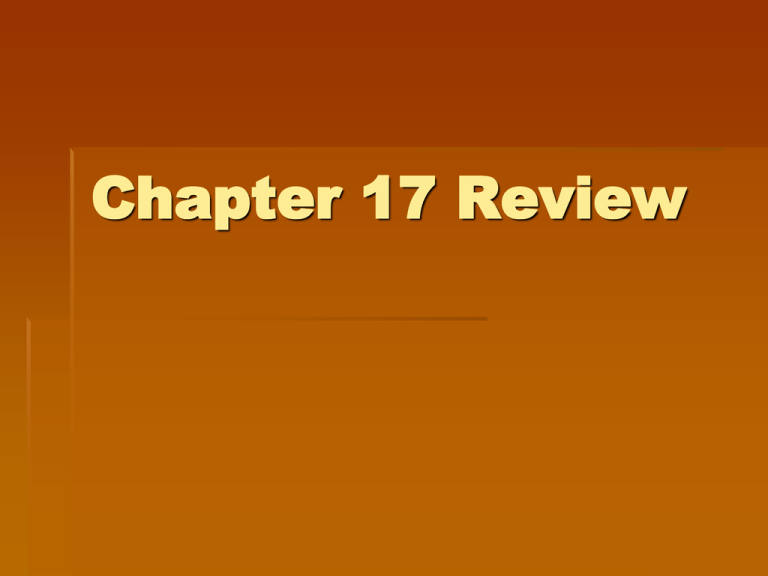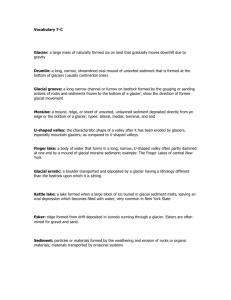Chapter 17 Review -
advertisement

Chapter 17 Review Question 1 If new snow was added to a glacier faster than ice & snow melts, what would happen to the glacier? It would get larger Question 2 What type of glacier is an massive sheet of ice that covers millions of square kilometers? Continental Question 3 Name at least 3 features that are formed by glacial deposition. erratics, till, glacial drift, moraines, and drumlins Question 4 What is a cirque? A deep, bowl-shaped depression formed by glacial erosion. Question 5 What is the snowline? elevation above which ice & snow remains throughout the year Question 6 What are long, winding ridges of gravel and sand deposited by melt water called? Eskers Question 7 Where do alpine glaciers form? Mountains Question 8 What is glacial drift? Sediment carried and deposited by a glacier. Question 9 How is the snowline affected by latitude? The closer to the equator, the higher up the mountain it would be. Question 10 What are the two ways a glacier can move? Basal slip & internal plastic flow. Question 11 What is basal slip? The process that causes the ice at the base of a glacier to melt and the glacier to slide. Question 12 What are large cracks in a glacier called? Crevasse Question 13 Outwash plains are usually filled with these depressions known as … kettles Question 14 A glacier works around small barriers by melting and then … Refreezing Question 15 What is the grainy ice that form when snow melts and refreezes called? Firn Question 16 Tear-shaped mounds of sediment formed by glacial deposition are what? Drumlins Question 17 What is an ice age? A long period of climatic cooling during which the continents are glaciated Question 18 What is the Milankovitch Theory? Cyclical changes in Earth’s orbit and in the tilt of its axis cause climatic changes. Question 19 One piece of evidence of past ice ages has been found by studying… Changes in shells of dead organisms and sediment changes Question 20 What are the three factors that Milankovitch mentioned that affects the solar energy reaching Earth’s surface? Eccentricity, Tilt, and Precession Question 21 What is a lateral moraine? Deposition of unsorted material along the sides of a glacier Question 22 How is an iceberg formed? (Name the process too!) The breaking of large block of ice from an ice shelf.. calving Question 23 How do glacial and interglacial periods differ and relate these differences to the sea level? Glacial periods are characterized by advancement of glaciers and lowering of the sea level and interglacial periods are characterized by retreatment of glaciers and raising of the sea levels. Question 24 What is an erratic? A boulder that has been transported and deposited by a glacier.






